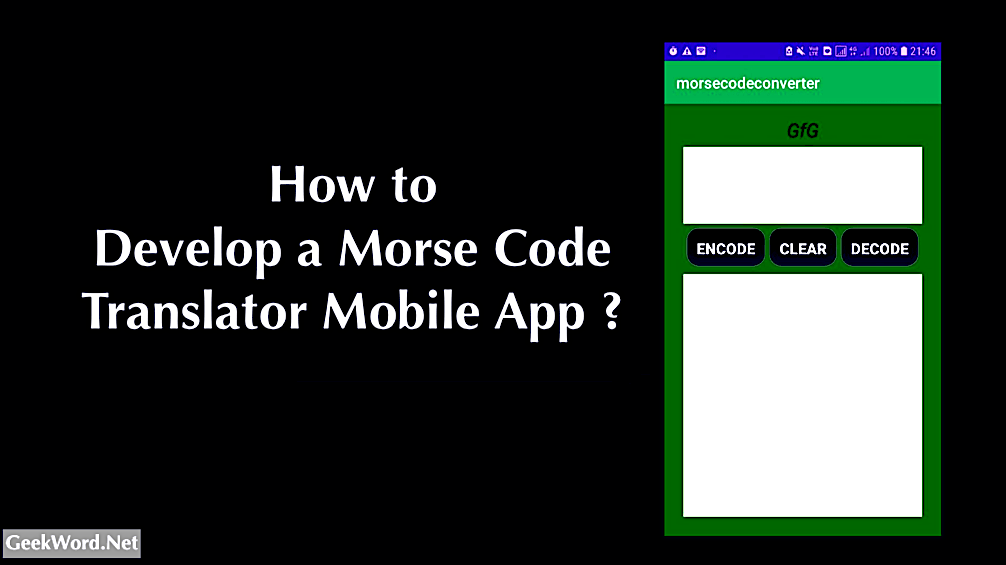Morse code, a system of communication invented by Samuel Morse in the 1830s, uses sequences of dots and dashes to represent letters and numbers. It remains relevant today, particularly in situations where verbal communication is not feasible. Morse code is primarily employed in telegraph and wireless communication, as well as in emergency services, such as distress signals.
If you’re considering developing a Morse code translator app, it’s essential to have a strong understanding of programming languages and the mobile app development process. This article will walk you through the steps of creating your very own Morse code translator app, from the initial concept to the final product. It will be especially beneficial for those looking for guidance on Morse code translation.
Contents
- 1 What is a Morse code translation app?
- 2 Understanding Morse Code Translator Mobile Apps
- 3 The Functionality of Morse Code Translation Mobile Apps
- 4 Essential Features for Developing a Morse Code Translator App
- 5 How to Develop a Morse Code Translator App: A Step-by-Step Guide
- 5.1 #Step 1 – Conduct Market Research on Morse Code Apps
- 5.2 #Step 2 – Identify Morse Code App Features & Objectives
- 5.3 #Step 3 – Design an Appealing Morse Code Translator App UI
- 5.4 #Step 4 – Develop Your Morse Code Translator App
- 5.5 #Step 5 – Test Your Morse Code App
- 5.6 #Step 6 – Deploy the App
- 5.7 #Step 7 – Gather User Feedback and Iterate
- 6 Essential Technologies for Developing a Morse Code Translator Mobile App
- 7 Do Morse Code Translator Apps Still Have a Market?
- 8 Reasons Why a Morse Code Mobile App Can Be Beneficial:
- 9 Conclusion:
What is a Morse code translation app?
A Morse code Translator app is a software application designed to transform the text into Morse code and vice versa. These apps are frequently utilized for educational purposes, allowing users to learn and practice Morse code or engage in amateur radio communications.
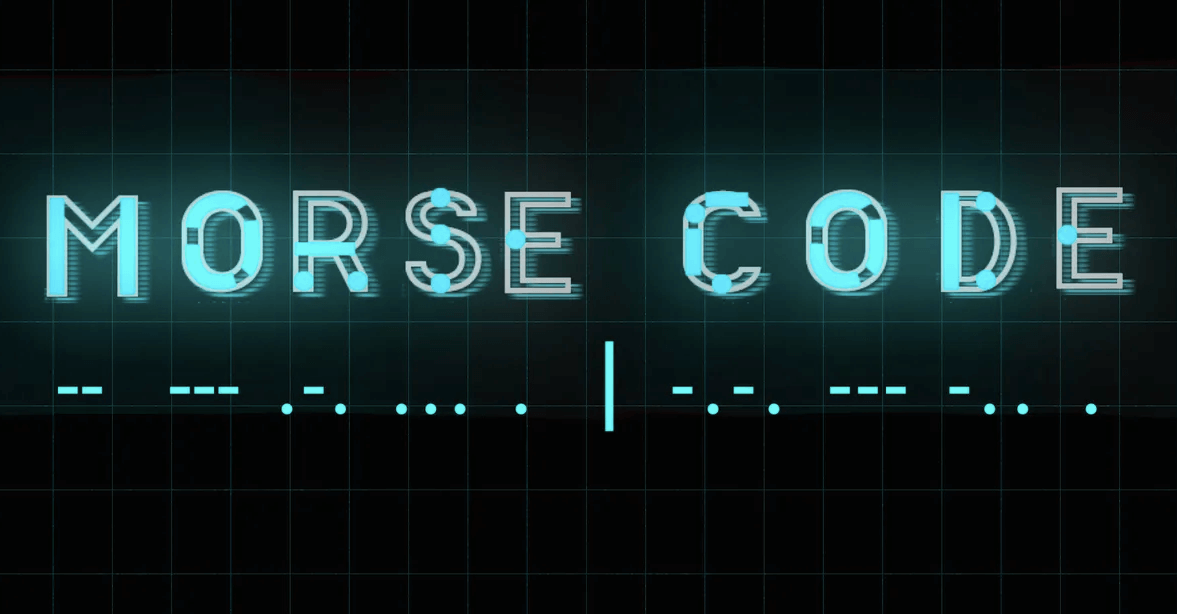
The core function of a Morse code translation app is to accept text or Morse code input and convert it into the corresponding format. Additional features might include adjustable signal speeds, sound effects, and the capability to transmit and receive Morse code via light or sound. Some apps also offer supplementary educational materials, such as lessons and quizzes, to assist users in learning and honing their Morse code skills. Morse code translation apps can be found on various platforms, including smartphones, tablets, and desktop computers, and can be acquired for free or purchased from app stores or online marketplaces.
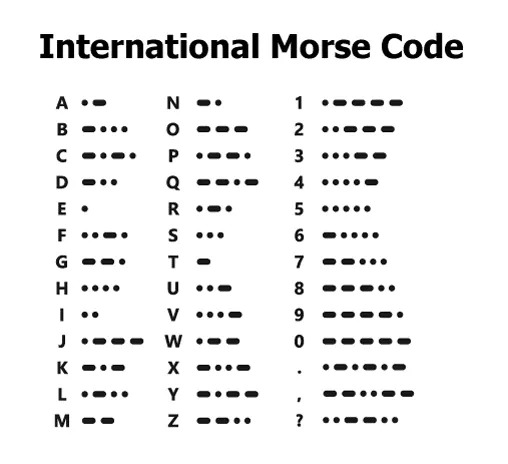
Understanding Morse Code Translator Mobile Apps
A Morse code translator mobile app is a specialized software application created to facilitate the conversion of text to Morse code and vice versa for users. These apps are typically accessible on mobile devices, such as smartphones and tablets, enabling Morse code communication in a variety of situations.
Features that could be incorporated in a Morse code translator mobile app include:
- Tools for translating text to Morse code and Morse code to text
- Audio playback of Morse code translations
- A practice mode for users to hone their skills
- The capability to send Morse code messages through email or text messages
- An intuitive interface and seamless navigation
Morse code translator mobile apps can serve multiple purposes, such as learning and practicing Morse code, emergency communication, amateur radio communication, and engaging with the history and importance of Morse code. These apps offer a handy and accessible means for users to explore and utilize this distinct form of communication.
The Functionality of Morse Code Translation Mobile Apps
Outlined below is the operational process of a Morse code translation app How Do Morse Code Translator Mobile App Work? :
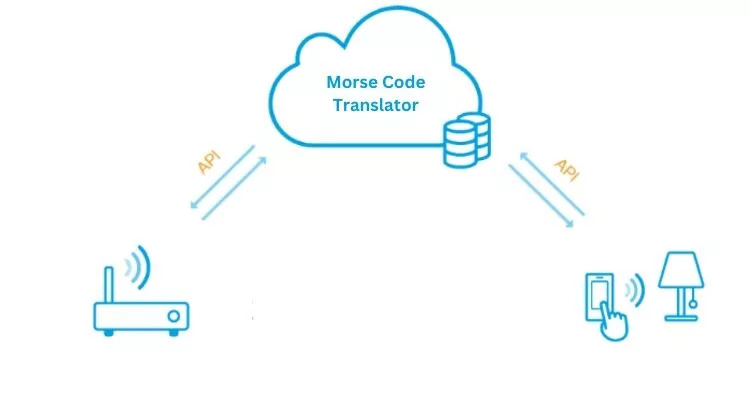
- The app is designed to transform text into Morse code and vice versa.
- When a letter or number is input, the app identifies a specific sequence of dots and dashes corresponding to that character in Morse code.
- For Morse code to text translation, the app reverses the process by taking a sequence of dots and dashes as input and generating the corresponding letter or number.
- This conversion typically occurs through predefined rules or mapping tables embedded within the app’s code.
- Additional features may include audio playback of the dots and dashes representing Morse code.
- User input can be facilitated through a touch interface or audio recognition.
In summary, Morse code translation apps simplify the process of converting Morse code to text and vice versa for users.
Essential Features for Developing a Morse Code Translator App
To create a successful Morse code Translator app, incorporating the following key features is crucial:
- User-friendly Interface: Ensure the app has a straightforward, intuitive, and easy-to-use interface.
- Input Methods: The app should accept input from various sources, including keyboards, microphones, or cameras.
- Translation Modes: Users should be able to seamlessly view translations between Morse code and text.
- Customizable Settings: Provide options for customizing speed, sound output tone, and light output flash rate.
- Sound Output: Enable Morse code translation into audible signals, such as beeps or tones.
- Light Output: Consider allowing translated Morse code to be displayed as flashes of light for visual recognition.
- Multi-language Support: Offer Translator support for multiple languages besides English.
- Audio Playback: Include a feature to play Morse code in an audio format, helping users learn how to speak Morse code.
- Accessibility Features: Make the app accessible to users with disabilities by incorporating adjustable font sizes, high-contrast modes, and other features.
- Offline Availability:- Consider providing offline translation capabilities so that users can access the app without an internet connection.
Incorporating these features into your Morse code translation app will enhance
How to Develop a Morse Code Translator App: A Step-by-Step Guide
To develop a successful and profitable Morse code translator mobile app, follow the steps outlined below.
#Step 1 – Conduct Market Research on Morse Code Apps
With numerous Morse code translator apps available, thorough market research is crucial. Examining the market and competition will provide valuable insights into the existing apps, helping you better develop your own Morse code translator app. Take note of all pertinent details during your research.
#Step 2 – Identify Morse Code App Features & Objectives
Determine the primary features and objectives of your Morse code translator app. This will help you understand the app’s intended use, allowing you to include the appropriate features. Allocate sufficient time to establish your app budget, decide on features, and more during this crucial phase of on-demand app development.
#Step 3 – Design an Appealing Morse Code Translator App UI
The appearance of your Morse code translator app is essential. Focus on creating an attractive, user-friendly UX/UI that will engage users. Make sure users can easily input text or Morse code and view translations on the screen. Instruct your app developers and designers to use the best tech stacks during development and design.
#Step 4 – Develop Your Morse Code Translator App
Proceed with the actual development of your Morse code translator app. Expertise is required for this process, so ensure you have a skilled development team or hire dedicated developers. You can use programming languages like Java or Swift for app development, or seek the assistance of experts for guidance.
#Step 5 – Test Your Morse Code App
Testing your Morse code translator app is vital to ensuring it is error-free and fully functional. Users will be deterred by an app riddled with errors and issues. If you’re developing the app independently, employ QAs
#Step 6 – Deploy the App
Once you’ve completed all the necessary steps to develop your Morse code translator app, ensure it functions correctly and has been thoroughly tested before deployment. Then, release the application on your chosen mobile app platform, such as the Google Play Store or the App Store. Keep in mind that different platforms have varying costs, so be clear about your target audience and budget from the start.
#Step 7 – Gather User Feedback and Iterate
After launching the app, it’s essential to collect user feedback to understand its strengths and areas for improvement. Encourage users to rate and review your app, and pay attention to their comments and suggestions. Use this feedback to make updates and enhancements to your Morse code translator app, ensuring it continues to meet users’ needs and expectations. Regularly iterate and update your app based on user feedback to maintain its relevance and popularity in the market.
Essential Technologies for Developing a Morse Code Translator Mobile App
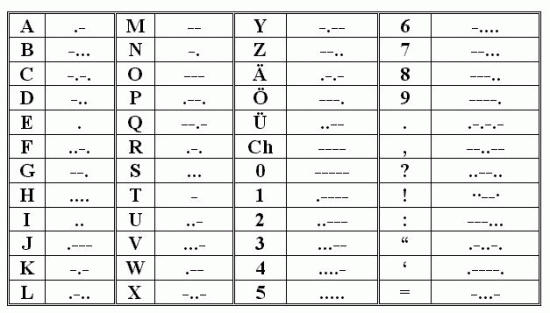
To develop a Morse code translator mobile app, several key technologies are required:
- Programming Languages: Developers need expertise in programming languages like Java or Swift to write the code that powers the app and enables various functions, such as text-to-Morse code translation.
- Mobile Development Frameworks: Developers may use mobile development frameworks such as Android Studio or Xcode to create and test mobile apps for different platforms. These frameworks provide essential tools and resources for app development.
- Audio Processing Libraries: To allow the app to play audio translations of Morse code, developers may utilize audio processing libraries like OpenAL or FMOD. These libraries enable audio file playback and control various aspects of audio performance.
- User Interface Design Tools: For crafting a user-friendly app interface, developers may need tools like Adobe Photoshop or Sketch. These tools facilitate designing and creating the visual elements of the app, including layout and user interface appearance.
Ultimately, the specific technologies required to develop a Morse code translator app depend on the app’s unique features and functionality. Generally, developers need knowledge of programming languages, mobile development frameworks, audio processing libraries, and user interface design tools to create a functional and appealing app.
Do Morse Code Translator Apps Still Have a Market?
Although Morse code has niche applications today, such as amateur radio communication and historical reenactments, it still holds some appeal. Hobbyists and enthusiasts interested in learning and practicing Morse code continue to drive the demand for Morse code translator apps.
However, given the prevalence of digital communication methods, the need for Morse code has substantially diminished in recent years. Many people may not find a Morse code translator app necessary in their daily lives, as they tend to rely on other forms of communication like text messaging and email.
Nevertheless, the demand for Morse code translator apps can fluctuate based on the target audience and the app’s features and functionality. There may still be a market for Morse code translator apps catering to hobbyists, amateur radio operators, and those interested in learning and utilizing Morse code for various reasons.
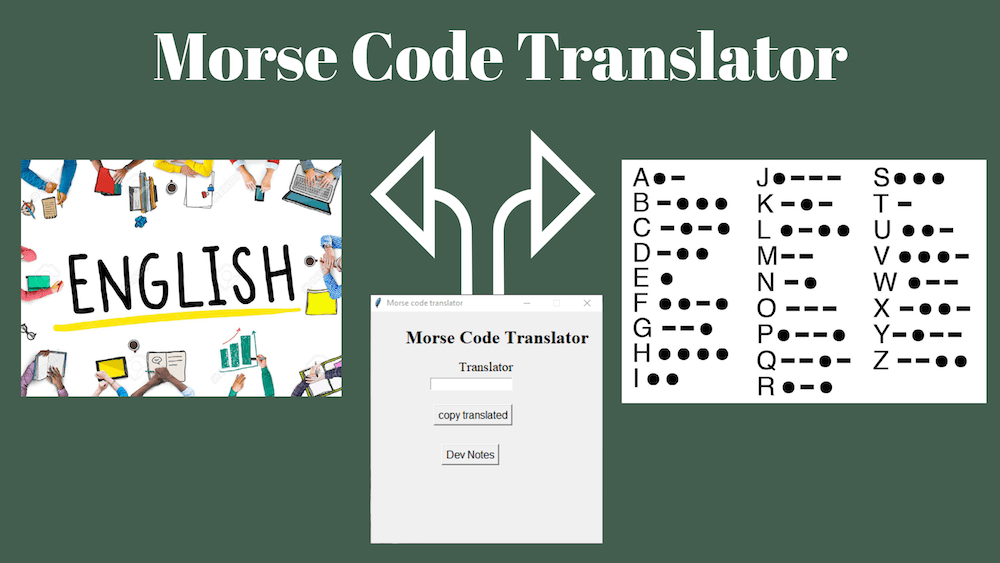
Reasons Why a Morse Code Mobile App Can Be Beneficial:
- Learning and Practicing Morse Code: A Morse code mobile app offers a handy and accessible means for users to learn and practice Morse code. Features such as translation tools, practice modes, and audio playback can help users enhance their skills.
- Emergency Communication: Morse code can be a valuable communication method during emergencies when other forms may be unavailable. A Morse code mobile app enables users to swiftly and effortlessly send Morse code messages.
- Amateur Radio Communication: Some amateur radio enthusiasts use Morse code for communication. A Morse code mobile app serves as a convenient tool for transmitting and receiving Morse code messages.
- Historical Interest: Individuals interested in the history and importance of Morse code can use a Morse code mobile app as an accessible way to learn about and practice the code.
Ultimately, the necessity for a Morse code mobile app depends on the user’s specific needs and interests. However, in various situations, a Morse code mobile app can be beneficial and offer a convenient means for users to learn and employ this distinctive form of communication.
Conclusion:
In summary, the process of developing a Morse code translator app may be challenging, but with a thorough understanding of the development steps, you can excel in creating a high-quality application. By adhering to the steps outlined in this article, you will be able to develop a successful app that caters to the needs of your users.
While the demand for Morse code translator apps may not be exceptionally high, such applications can prove valuable in various circumstances, making them worth considering for development. By collaborating with a top mobile application development company or hiring dedicated developers, you can ensure the creation of a revenue-generating app that stands out in the market.
Remember to conduct thorough market research, define the app’s features and purpose, design an appealing and user-friendly interface, develop the app using the appropriate technologies, and test the app thoroughly before launching it. By following these steps diligently, you will be well on your way to crafting a Morse code translator app that serves its users effectively and keeps them engaged.
In conclusion, the potential of a Morse code translator app lies in its ability to meet the specific needs of various users, including hobbyists, amateur radio operators, and those interested in emergency communication. With a well-executed development plan and a focus on delivering a user-friendly and feature-rich app, you can create a valuable tool that stands out in the niche market of Morse code translation.
Aamna is a young enthusiast writer, who Loves different niches, Internet tech, Gadget, Mobile trends and is always eager to share useful informative content to help readers. She has expertise in Digital Marketing and technical advisor.

